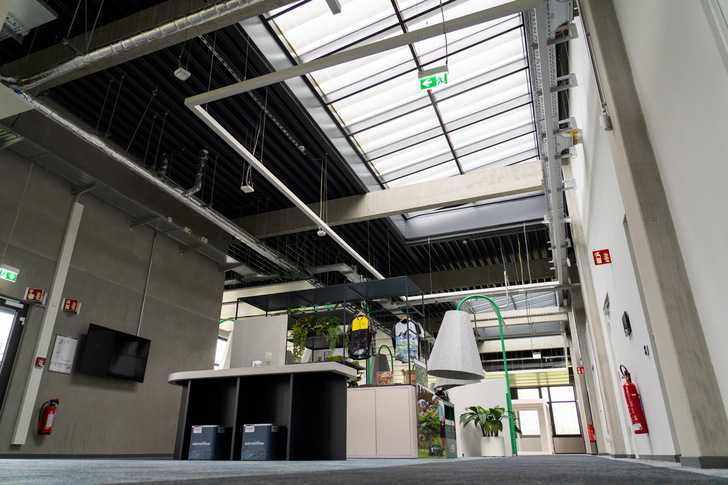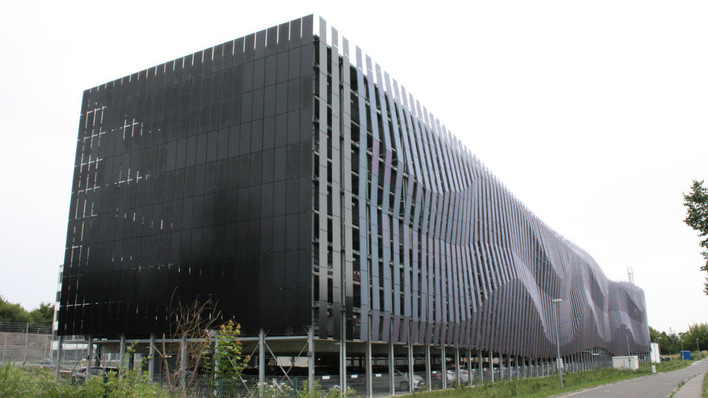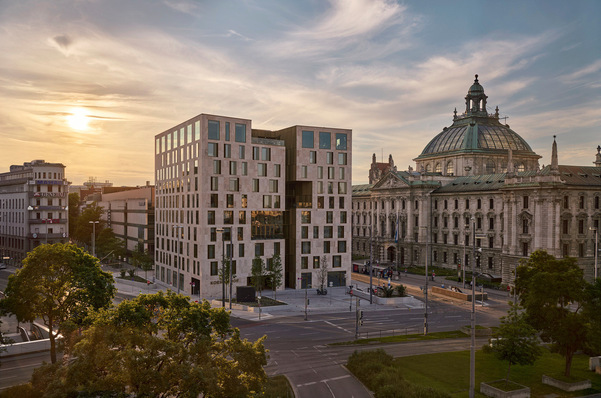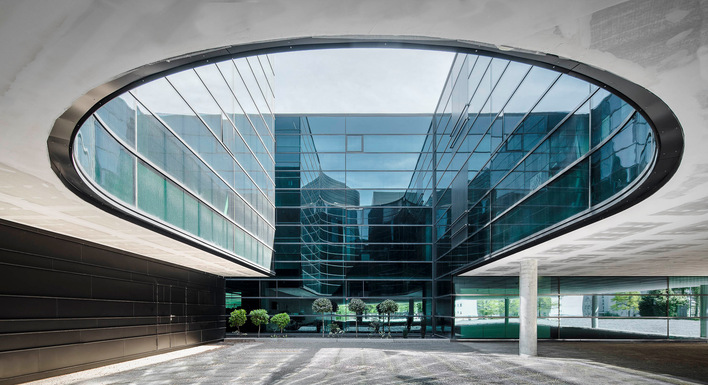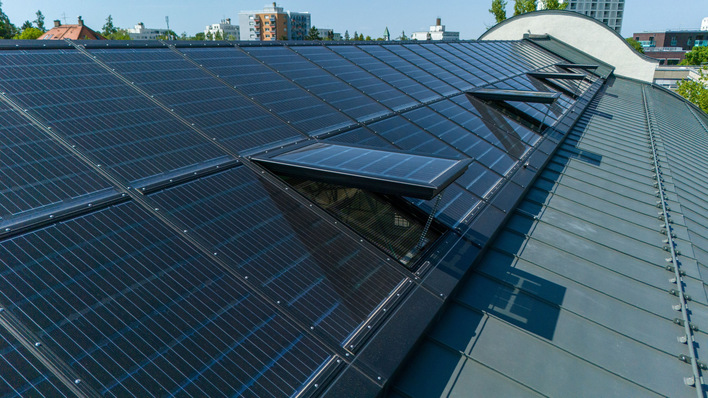The Velux Commercial skylights are not only an effective way to save on heating, air conditioning, and artificial lighting costs, but also contribute positively to the building's energy efficiency. For example, the skylights are part of the hybrid ventilation system. Thanks to its low primary energy requirement, the new building designed by Sonnentag Architektur was able to meet the requirements of the “KfW Efficiency House 40” standard.
For over 20 years, MBPS has specialized in the after-sales business for motorcycles, bicycles, and e-bikes—for example, from brands such as Magura and Bosch eBike. Due to its successful growth in recent years, the previous company headquarters had reached its limits in several respects. In order to continue expanding, the decision was made to build a new building in Nürtingen, south of Stuttgart.
Around 170 employees now work at the company's new headquarters, which has a usable area of 9,000 m². If necessary, it can be expanded to accommodate up to 430 employees. The design sets high standards in terms of sustainability. Hybrid ventilation, photovoltaics, and geothermal energy are three key technologies in this regard. Green roof areas and a high degree of daylight utilization to reduce energy requirements for lighting underline the sustainable concept.
Hybrid ventilation
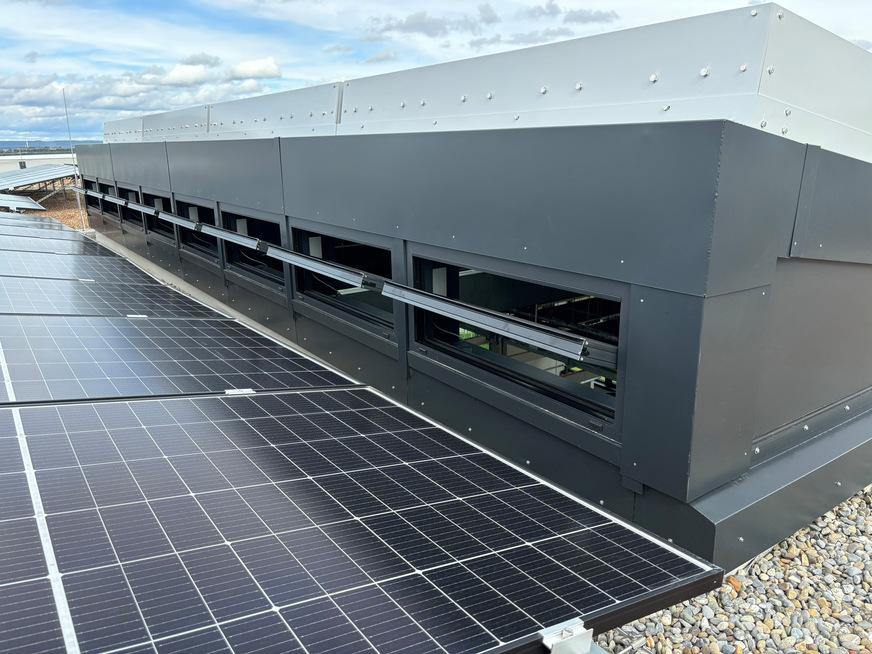
Velux Commercial
An individual ventilation concept was developed for the new MBPS building, combining natural ventilation with a ventilation system. This was based on a thermal building simulation, which showed that the mechanical ventilation system would only need to be used for less than 50 per cent of the operating time. This also means that more than half of the energy requirements can be saved compared to a conventional ventilation system.
The priority in this concept is window ventilation, which consists of motor-driven and sensor-controlled window sashes in the roof and facade. In this way, the building is cooled at night and the rooms are ventilated during operating hours, as long as climatic conditions permit. Only when this is no longer possible does a mechanical ventilation system intervene in the system. CEO Jochen Hoppe reports that the concept has already proven itself in practice: “Especially in the morning hours, when outside temperatures are still low and the sun's rays have not yet warmed the surfaces, the cooling demand can already be completely covered by hybrid ventilation.”
Photovoltaics and geothermal energy
A geothermal probe field consisting of 96 geothermal probes forms the basis of the building's energy supply. The probes were drilled 130 meters deep into the ground. They heat the building in winter and cool it in summer. Parallel heating and cooling operation means that a single system can provide all the thermal conditioning for the building with very high efficiency, while at the same time ensuring that the geothermal conditions in the ground remain constant.
A flat roof with photovoltaic elements and a nominal output of 550 kWp is used to produce the building's own solar power. Most of the electricity produced is consumed directly in the building and covers approximately 50 per cent of the total energy requirements of the building services systems. The photovoltaic system saves 245,000 kg of CO2 annually. The payback period is approximately seven years.
With these and other measures, the planned building with low primary energy requirements meets the requirements of the “KfW Efficiency House 40” standard.
Attractive working environments with different challenges
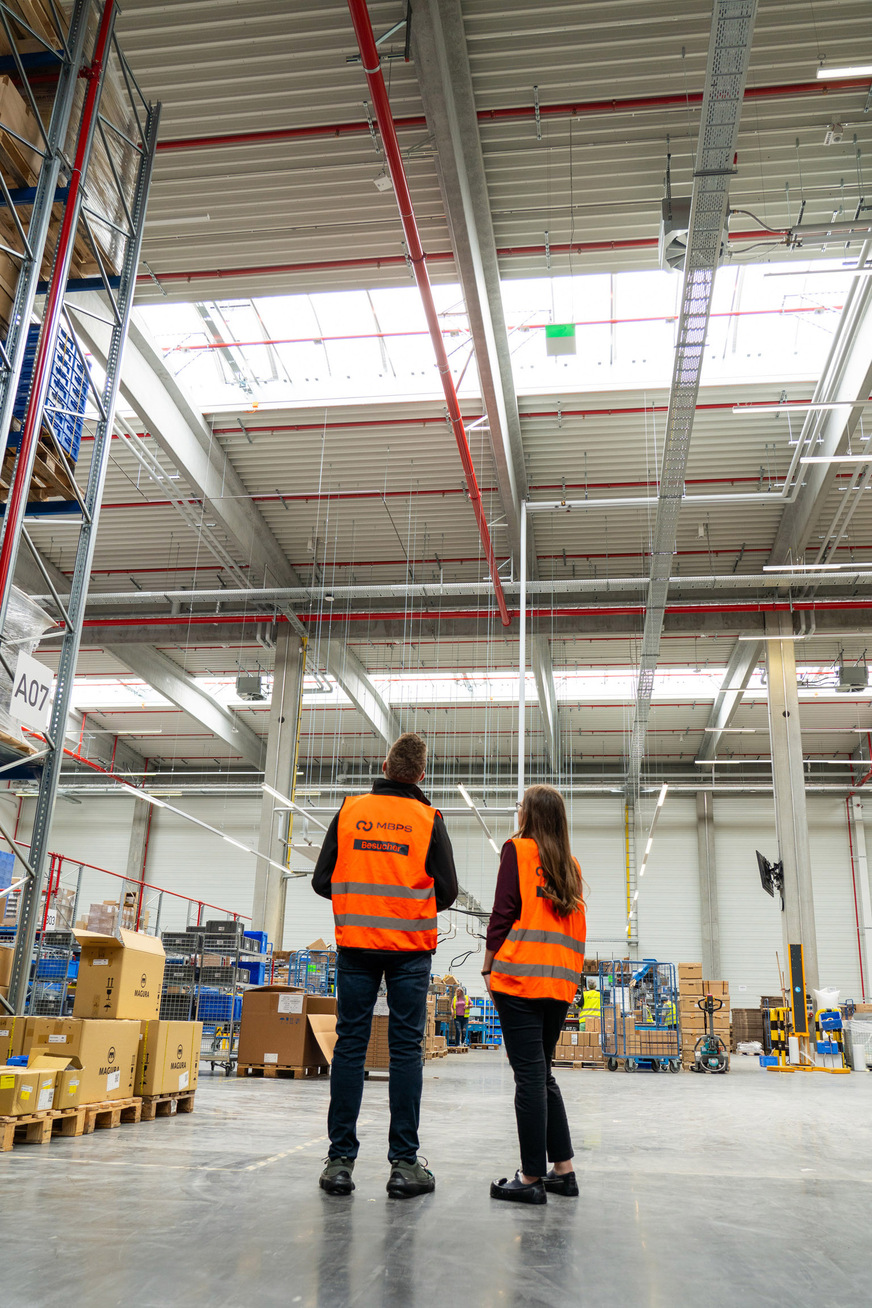
Velux Commercial
When designing the work areas, MBPS placed particular emphasis on the well-being of employees. The goal was to create bright workplaces with plenty of natural daylight without any annoying glare. The challenge was to meet the very different requirements of the building's various uses. Office buildings and logistics halls have two completely different sets of requirements: the office was much more complex and costly, partly because it required completely different temperatures and much smaller temperature fluctuations than a logistics hall.
CEO Jochen Hoppe explains why the decision was made to provide additional lighting via the roof: “Due to a fire wall separating our storage areas with lithium-ion batteries, we were faced with the challenge of having windows on only one side of the office areas – with a depth of 18 meters. In order to still provide sufficient daylight, we planned for generous skylights with fixed shading elements.” The BA glazing system from Velux Commercial was used, with a very good Ug value of 0.7 W/m²K, which can contribute to low heating energy requirements in the cold season. The flexibly designed mullion-transom construction made of aluminum profiles and high-quality insulating glass elements now ensures bright workplaces even in the depths of the room thanks to several large roof openings measuring 4 x 9 meters (7x) and 1 x 4.5 meters (1x). In addition, the skylights are used for ventilation by means of vertically integrated ventilation louvers and ensure a pleasant indoor climate. To prevent glare and the building from overheating, external sun protection louvers were also installed in front of the glazing systems. These can be adjusted depending on the position of the sun, so that the interior remains comfortable even on hot days without having to completely forego daylight.
In addition, Velux Commercial Top 90 dome skylights were used in three stairwells of the building for selective lighting. Their geometric opening area means they are approved as smoke vents and contribute to safe smoke extraction in the event of a fire.
Everything from a single supplier
In logistics and storage areas, the requirements for thermal insulation are naturally lower. “As an unheated area, 18° is acceptable in the hall,” explains architect Thomas Sonnentag. The focus here was on finding a solution for large-scale lighting via the roof while at the same time meeting fire protection requirements via smoke and heat extraction systems. “We didn't want to settle for just meeting the necessary smoke and heat extraction area requirements in the hall. There are also workplaces here that deserve a high-quality solution,” says Thomas Sonnentag, explaining the decision to install four Vario-Therm polycarbonate skylights with lengths of 27 to 70 meters. They provide glare-free and shadow-free daylight throughout the hall via the roof. In the event of a fire, the integrated 15 double flaps, which can be opened electrically via 24V drives, ensure smoke and heat extraction. The meltable surfaces would tear open in the event of a fire and allow additional heat to escape.
The skylight solutions were planned in collaboration with Velux Commercial. This meant that everything from lighting and comfort ventilation to smoke and heat extraction via the roof could be sourced from a single supplier. Architect Sonnentag once again emphasizes the good cooperation between all planning disciplines for control, ventilation, and heating, as well as the trades and manufacturers: “Everyone pulled together—and I think you can see that in the building at the end of the day.”
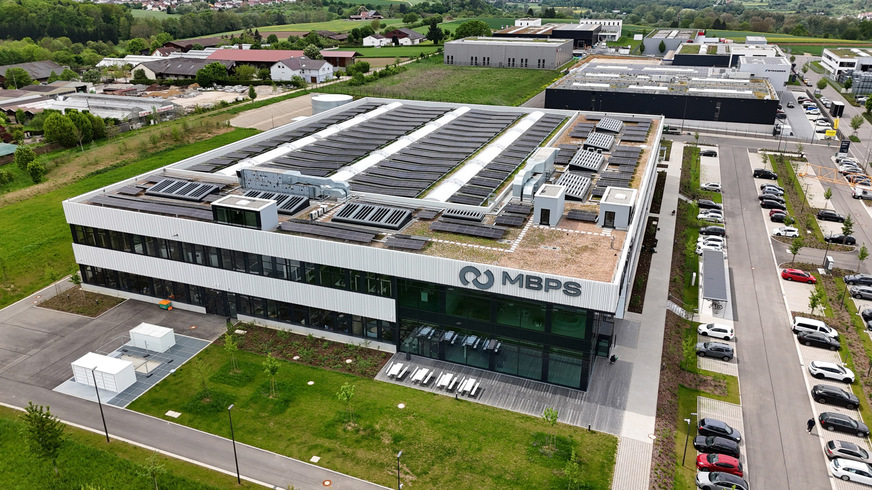
Velux Commercial







